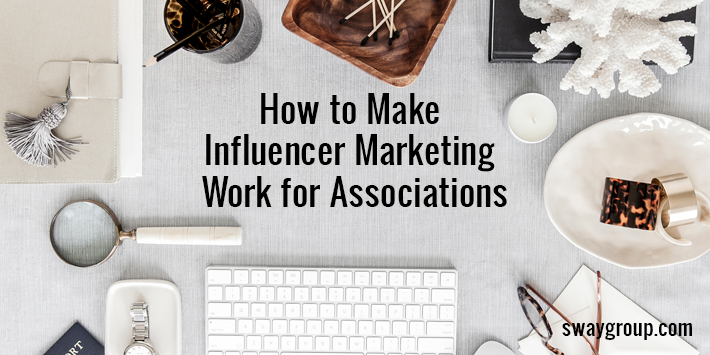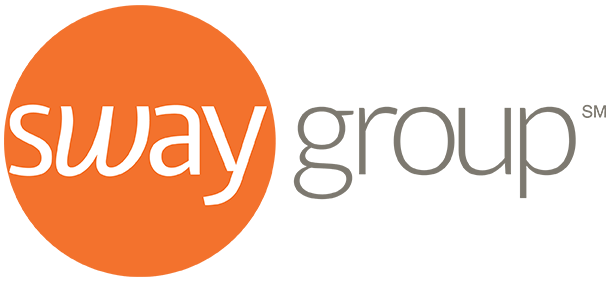The business of influencer marketing is estimated to reach a whopping $10 billion by the end of 2020, and more marketers than ever are ready to jump on board. In fact, a recent survey from the ANA (Association of National Advertisers) revealed that 75 percent of advertisers are currently using influencer marketing, with 43 percent planning to increase their spend on it in the next 12 months. As the industry grows, so do the opportunities, and today influencer marketing is no longer limited to brands: special interest groups and national associations have begun tapping into the credibility and inspiration shared by influencers with great success.
For groups, brand boards, and associations, influencer marketing is the perfect method for reaching precisely targeted demographics, with the kind of on-trend messaging audiences respond to.
In this article (originally published on Forbes), we’ll share 5 of our best tips for how influencer marketing can help groups and national associations.

Here are 5 reasons why influencer marketing for associations works — and how to make it work for your organization:
Influencers Spark Engagement. National associations often have the goal of awareness and engagement rather than direct sales, and influencer posts are ideal for starting conversations and sharing ideas. As an example, when our client, the American Christmas Tree Association identified a rising consumer trend of buying artificial trees, they used social media and real families to help boost the concept of tree-cutting as a cherished family tradition.
We also saw strong engagement when we worked with the American Dental Association. For the ADA, Sway Group engaged wellness and lifestyle-focused influencers in order to raise awareness around healthy oral care routines. Rather than simply promoting dental hygiene products, influencers sparked a lively conversation around the topic of oral care, resulting in a campaign that drove 28K+ total engagements across all platforms.
When influencers are writing sponsored content for associations, they should incorporate personal stories and images in order to make the topic relatable to readers. Evergreen content like recipes and tutorials not only has long-lasting appeal, it’s likely to be shared (especially when they include a Pinterest-worthy graphic or two). Aim to boost conversations on Twitter and Facebook with branded hashtags — but don’t overdo it. #Too #many #hashtags, and audiences #tune #out.
Stereotype-Breaking Campaigns. National associations may have been thought of as sterile or even stodgy in the past, but today’s influencer campaigns have the kind of modern messaging needed to connect with younger audiences. From food bloggers to beauty experts, content creators can go beyond individual brands in terms of boosting industry visibility and perception.
Influencers know what type of content their audience is looking for; let them be creative in how they execute your key messages. So don’t be afraid of using humor and an informal voice, particularly with millennials and Gen Z.
Authenticity Resonates. Associations are focused on helping their brands rise, but traditional advertising no longer works with today’s savvy consumers. The days of “Got Milk?” and “Beef. It’s What’s for Dinner” feel outdated; audiences want stories, not slogans. Give influencers the chance to spread brand or commodity messaging in an relatable way, and the content is much more likely to resonate.
Influencers connect with audiences because they feel like a trusted friend; they provide real-life, genuine stories and images for their followers. In order to preserve this dynamic, associations should prioritize influencer partnerships that are a true organic fit, because audiences stop listening when a message feels forced or insincere. Consumers don’t want to be sold to, especially millennials, who overwhelmingly say authenticity is important when deciding what brands they like and support.
The Power of Good Storytelling. The best influencer campaigns provide audiences with a genuinely rewarding experience, whether it’s by being entertained, learning something new, or fostering an emotional connection. Great content translates to great performance: views, likes, shares, and comments are all driven by top-notch storytelling and media.
Associations should partner with experienced influencers who can leverage content in creative ways, and don’t overlook microinfluencers or nanoinfluencers: they often have more sway than their more popular peers. For organizations who don’t have the in-house resources to target, recruit, and manage influencers, look to a full-service agency for strategy and programming.
Highly Targeted Reach. Industry groups who are looking to spread awareness and engagement to specific audiences have the perfect vehicle with influencers, who often provide deep-dive targeting opportunities. Organizations, boards, and commodity promotion programs can use influencers to spread the word in niche verticals, across specifically-chosen demographics.
Associations should consider partnering with agencies that have diverse influencer networks in order to reach as many targeted groups as possible. Agencies can also help create flexible campaigns that allow for influencer-driven customization (for example, recipe creation that varies by regional palate).
Influencers have become the perfect choice for helping special interest groups drive awareness and engagement around the industries they’re working to support. With everyone from financial groups to health awareness campaigns tapping into the credibility and inspiration influencers bring to the table, this is one marketing trend industry associations can’t afford to ignore.
Want to learn more about how Sway Group can help your association? Get in touch today for a customized proposal!
